Photo

Adriaen Collaert (Netherlandish, ca. 1560–1618) after Maerten de Vos (1532–1603) - America, from the Four Continents, engraving, 21 x 25.7 cm 1580–1600
73 notes
·
View notes
Photo

Gem engraved with the head of Marc Antony, signed by Gnaios
Greco-Roman, c. 40-20 B.C.
amethyst gem set in modern gold ring
Getty Museum
552 notes
·
View notes
Text

Giovanni Girolamo Savoldo - The Temtation of Saint Jerome. 1515
14 notes
·
View notes
Text




Virgil's tomb (Italian: Tomba di Virgilio) is a Roman burial vault in Naples, said to be the tomb of the poet Virgil (70–19 BCE). He composed three of the most famous poems in Latin literature: the Eclogues (or Bucolics), the Georgics, and the epic Aeneid.
Virgil was the object of literary admiration and veneration before his death. In the following centuries and particularly in the Middle Ages his name became associated with legends of miraculous powers and his tomb the object of pilgrimages and pagan veneration.
At the time of Virgil's death, a large bay tree was near the entrance. According to a local legend, it died when Dante died, and Petrarch planted a new one; because visitors took branches as souvenirs the second tree died as well.
When Virgil died at Brindisi in 19 BCE, he asked that his ashes be taken back to his villa just outside Naples. There a shrine was created for him, and sacred rites were held every year on his birthday. He was given the rites of a hero, at whose tomb the devout may find protection and counsel. Virgil's tomb became a place of pilgrimage for many centuries, with Petrarch and Boccaccio being among those who visited the tomb.
The tomb still contains a tripod burner originally dedicated to Apollo. There are no human remains in the tomb, however, as Virgil's ashes were lost while being moved during the Middle Ages.
31 notes
·
View notes
Text

Roman epitaph inscribed "Sergius Asinius Phainus made this for his most sweet mother, Annia Isias"
1st-2nd century AD
from The British Museum
194 notes
·
View notes
Text

Fresco in Casa del Bracciale d'Oro Pompeii /
Garden scene in the House of the Golden Bracelet or
House of the wedding of Alexander, 1st century BC-1st century AD
Source: Instagram
Via: le_jardin_robo
#ends-2-beginnings
97 notes
·
View notes
Text

House of the wounded bear, Pompeii.
Photo: Silvia Vacca
The name of the house is due to the mosaic on the entrance floor that depicts a bear wounded by a spear.
1K notes
·
View notes
Text


Bronze ornament from a chariot pole. Roman 1st–2nd century CE. x
This heavy metal ornament, decorated with the head of Medusa and inlays of silver and copper, probably comes from a currus triumphalis (ceremonial chariot) used in processions rather than a lightweight racing chariot.
139 notes
·
View notes
Text

The Celtic goddess Sequana in her duck-boat.
Bronze, Gallo-Roman era, Archaeological Museum of Dijon
142 notes
·
View notes
Text

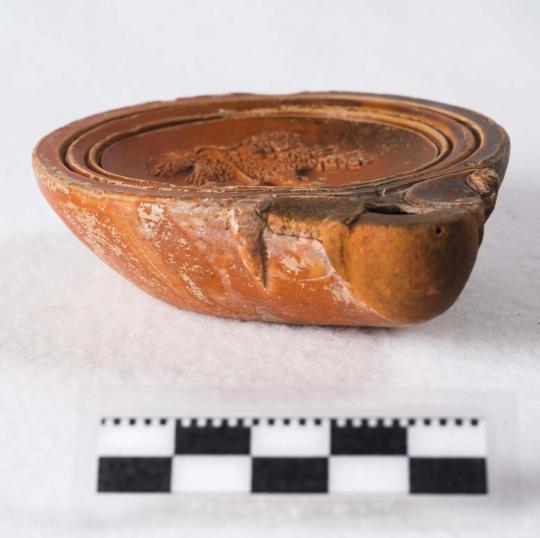
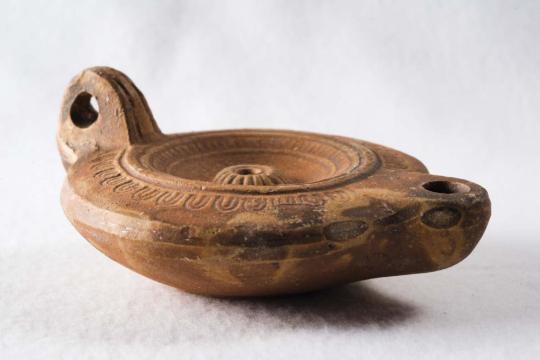





Some decorated oil lamps 🪔 from Ancient Roman times found in Barcelona, Catalonia. All are kept in Museu d'Història de Barcelona (MUHBA).
Photos 1 and 2. Second half of the 1st century CE. x.
Photos 3 and 4. Made in Northern Africa, mid 1st century CE to mid 2nd century CE. x.
Photo 5. 1st century CE. x.
Photo 6. First half of the 1st century CE. x.
Photo 7. Made in modern-day Tunisia, 5th century CE. x.
Photo 8. Ancient period but date unknown. x.
58 notes
·
View notes
Text

Alice Halicka (1884-1974), Costume pour le Baiser de la Fée, 1937, MoMa
5 notes
·
View notes
Text


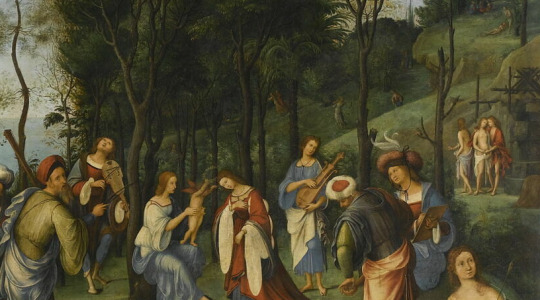
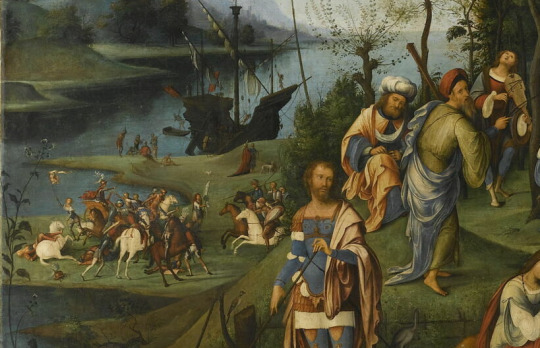
Allegory of Isabella d'Este's court, Lorenzo Costa, 1500-1525
8 notes
·
View notes
Photo
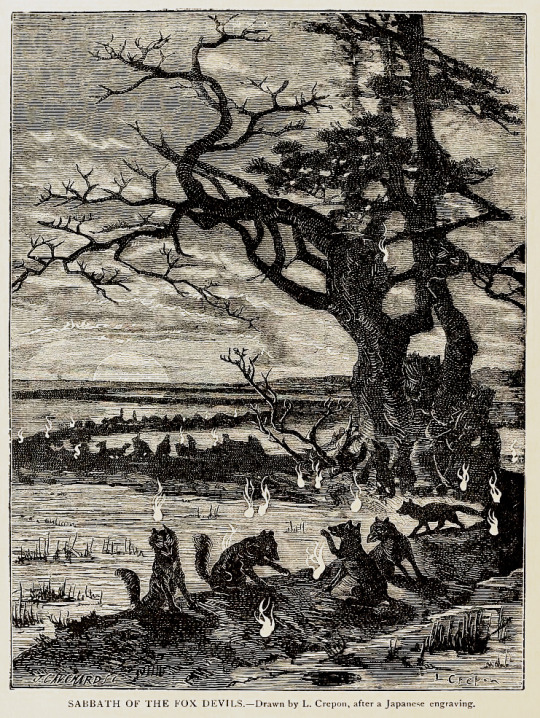
Lucien Crepon (1828-1887), 'Sabbath of the fox Devils’, from “Cyclopedia Universal History, Vol. VII” by John Clark Ridpath, 1895
Source: https://archive.org/details/cyclopediauniver1953ridp
“This image shows the old tree where the foxes meet once a year at night. This is a legend in Japan where marsh lights are referred to as “Kitsune bi” which means fox fire. The foxes come in a procession to receive their orders for the upcoming year and find mates. This procession is reflected in the customs for the processions at Japanese weddings. These marsh lights are known as “ignes fatuus” which is a spontaneous combustion of the gases in a phosphorescent fungus.The procession of lamplights and torches is not only in Japan but world wide..In Japan the foxfire “Kitsune no Yomeiri” is rarely seen today due to the deforestion.”
Source: http://www.philographikon.com/printsjapan.html
90 notes
·
View notes














